Almost every three out of five tribal families who filed their claims under the Forest Rights Act, faced rejection in Madhya Pradesh
Under the Forest Rights Act, 2006, less than half the applicants have received titles while 41% claims stand rejected, as per the data of the tribal affairs ministry. At over 57%, Madhya Pradesh has rejected the highest number of title claims as of August 31, 2020.
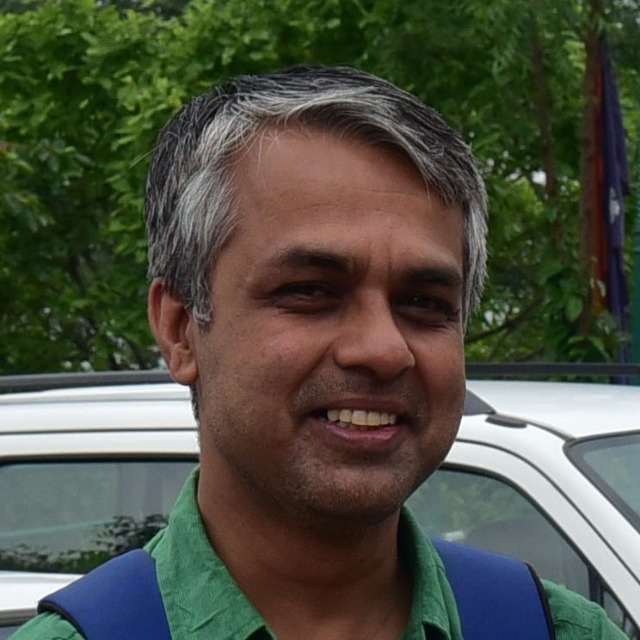
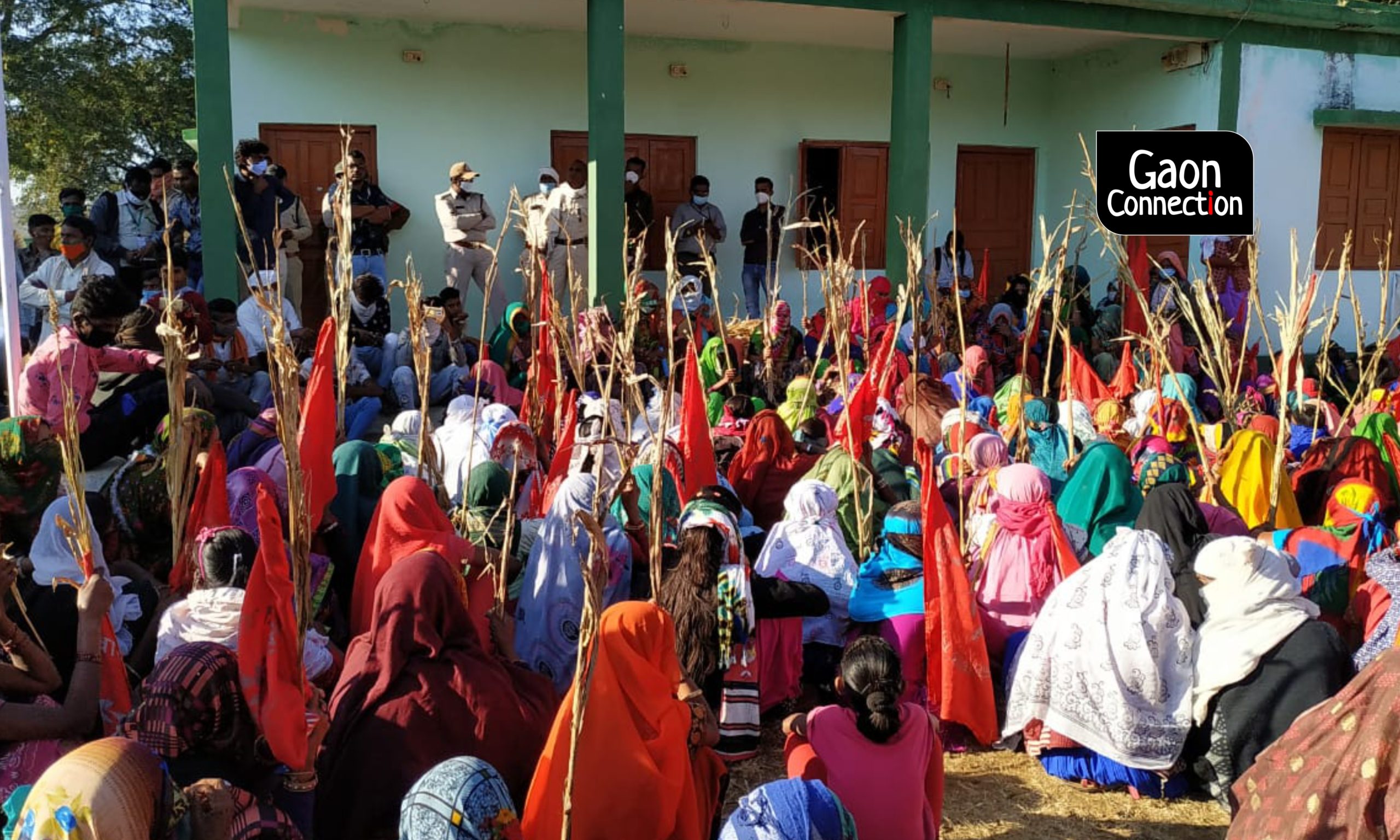
Photo: Jagrit Adivasi Dalit Sangathan Madhya Pradesh.
Bhopal, Madhya Pradesh
On November 26 last year, Gyarsilal, a Bhilala tribal who resides in Lingi Fata village in Burhanpur, went about his regular chore of collecting fodder. Two forest guards of Dhulkot forest range in Burhanpur, about 330 kilometres from Madhya Pradesh state capital Bhopal, yelled at him, alleging he was collecting fodder from the forest and felling trees. They accused him of being responsible for the loss of forest cover.
“I told them I had collected kadbi [fodder] from agricultural land, and it was not a crime to do so. But they yelled at me and brought me in a vehicle to a concrete shed in the Dhulkut forest range office,” he told Gaon Connection. Gyarsilal alleged he was handcuffed and was assaulted by the ranger with a pipe. He was jailed and later released.
Following this, in early December, hundreds of adivasis (indigenous people) in Madhya Pradesh’s Burhanpur district who have been cultivating small patches of land in the nearby forests for generations surrounded the forest range office protesting Gyarsilal’s assault.
Adivasis use the fodder collected to cook food and create boundaries to guard crops from wild animals and cattle.
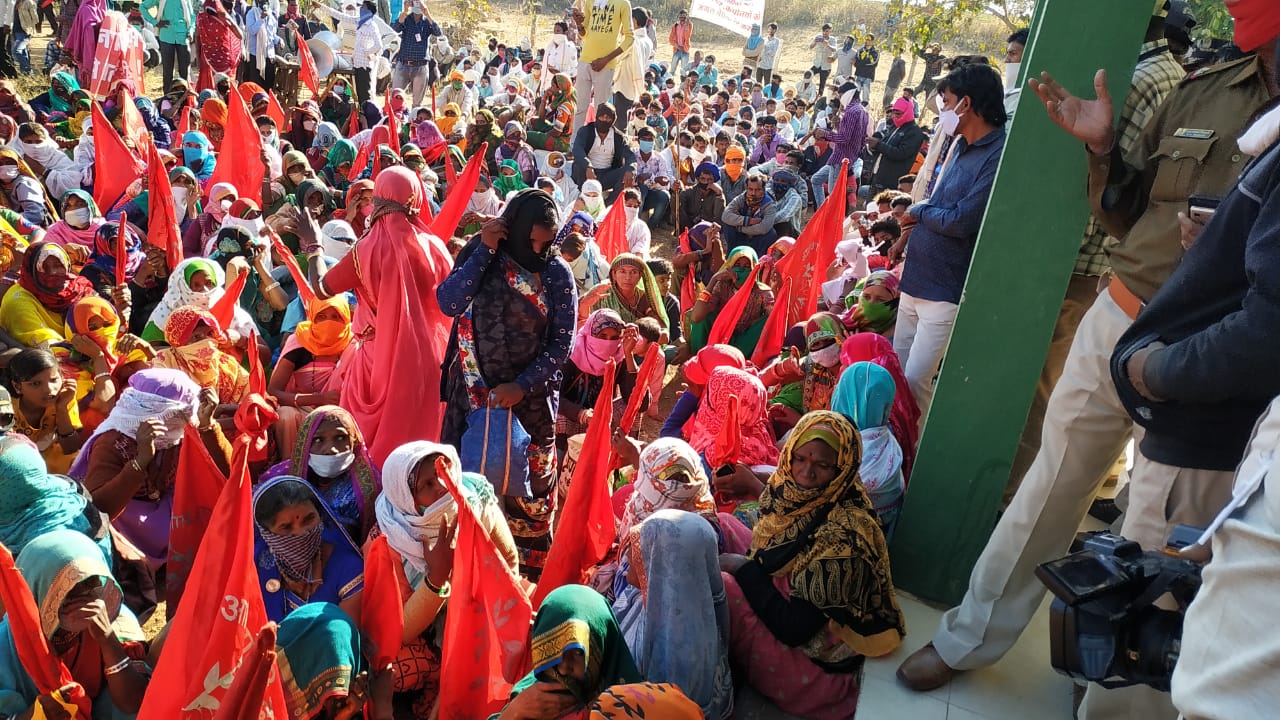
This is not the first time such a clash has taken place. The reasons for such clashes between the forest department and tribal communities are many, but prime among them is lack of settlement of claims under The Scheduled Tribes and Other Traditional Forest Dwellers (Recognition of Forest Rights) Act, 2006, commonly known as the Forest Rights Act (FRA), 2006.
The Forest Rights Act, 2006, legally recognises and vests forest rights and occupation in forestlands with scheduled tribes and other traditional forest dwellers who have inhabited and resided in the forests for generations. It also empowers gram sabhas to manage and govern the forestlands.
According to data released by the Union ministry of tribal affairs, which is the nodal ministry for implementation of the 2006 Act, at the national level, 4,253,089 claims (4,103,177 individual and 149,912 community claims) were filed up to August 31, 2020, of which 1,985,911 titles (1,909,528 individual and 76,383 community claims) were distributed.
This comes to 46.69 per cent, or less than half of the applicants being awarded the titles under the FRA. At the same time, as per the ministry’s data, 1,755,705 claims received at the gram sabha level were rejected under the 2006 Act, which comes to an overall rejection rate of 41.28 per cent. This makes those forest dwelling families ‘encroachers’.
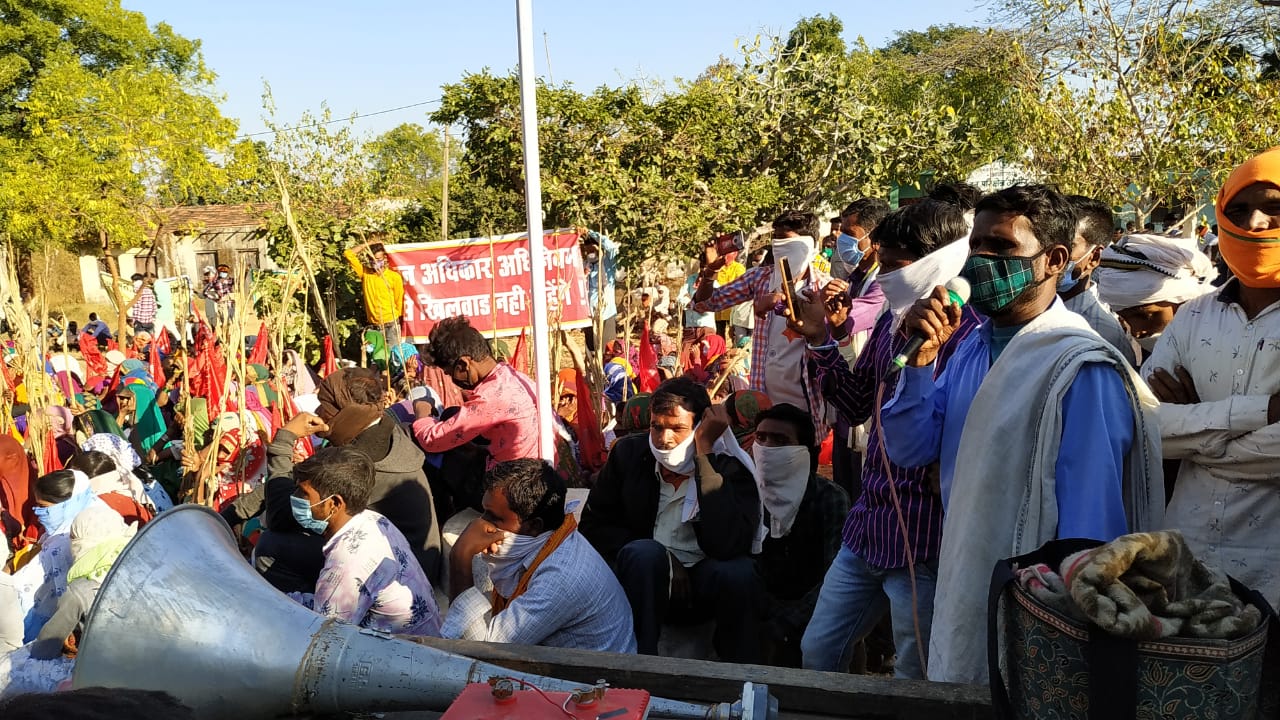
Notably, Madhya Pradesh has rejected [358,767 claims] the highest percentage of claims in the country — 57.17 per cent of the total claims filed under the FRA 2006 with the gram sabhas in the state have been rejected. As of August 31 last year, 627,453 claims [5,85,266 individual and 42,187 community] were filed, but only 257,964 titles [2,29,988 individual & 27,976 community] were distributed, according to the latest statistics of the Ministry of Tribal Affairs.
This comes to a title distribution of only 41.11 per cent in Madhya Pradesh under the 2006 Act.
Neighbouring state Chhattisgarh received the highest number of 890,240 claims, of which 461,590 (51.85 per cent) were rejected, and 423,218 (47.53 per cent) titles distributed till August 31, 2020.
No wonder, forest areas in Madhya Pradesh are sitting on a powder keg. In August last year, six forest department officials were attacked when they said they tried to “dissuade the land mafia from illegally occupying forest land” at Nadura Beat of the Burhanpur Forest circle. Nitin V of Jagrit Adivasi Dalit Sangathan, an organisation fighting for the rights of indigenous people, alleged that these officials picked up two members of the local tribal community who were returning after grocery shopping from Khaknar market.
Responding to the allegation of stopping tribal people from gathering fodder, Gaurav Chouhan, Burhanpur district forest officer, told Gaon Connection, “We have not stopped them from gathering fodder or cultivating their land. We just do not tolerate illegal encroachment on forest land.”
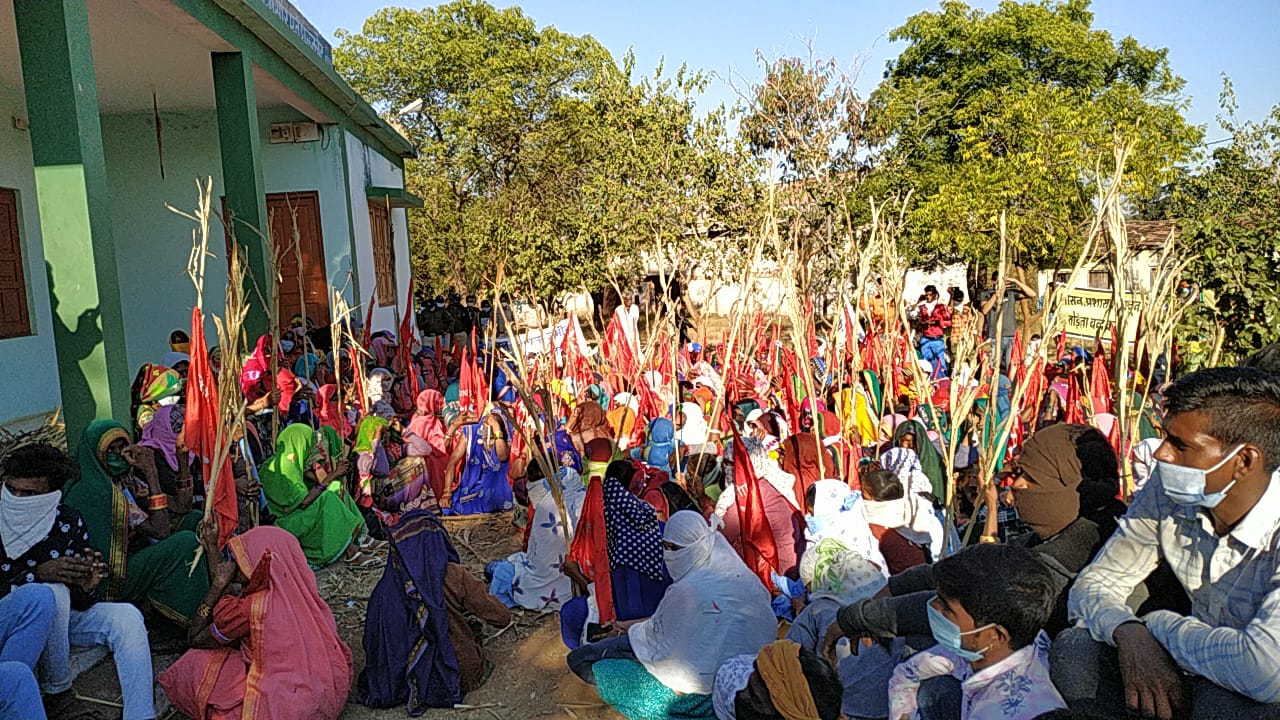
300 million traditional forest dwellers
As per the February 2019 Report No 324 of Rajya Sabha titled ‘Status of Forest in India’ nearly 300 million tribals, other traditional forest dwellers and rural poor in the country derive their livelihoods mainly from forest resources.
A July 2015 report, ‘Potential for Recognition of Community Forest Resource Rights Under India’s Forest Rights Act’, published by a global coalition, Rights and Resources Initiative, notes that at least 400,000 sq km, or 56.5 per cent of the forests in the country, are accessed and used by forest dwellers. But, their traditional and customary rights remained unrecognised. This often leads to skirmishes between tribal communities and state forest departments.
“I cultivate the same land that my forefathers have farmed. However, I do not possess a patta [title deed],” said Antaram, a resident of Sewal village in Burhanpur district, who farms on five acres (2.02 hectares) of land. He told Gaon Connection the administration has been repeatedly cancelling his claim — he has applied in the years 2012, 2014, 2016 and in 2018. He and his two brothers were handed down 15 acres of land, five acres each.
“If we raise our voices, the forest officials maintain we are cultivating on forest land,” Shanta Bai of the same village said. “Due to repeated rejection of my claim, I feel I run the risk of being evicted anytime,” she rued.
Dwindling forest cover
The forest is all-encompassing for forest people. It provides them renewable raw material and energy, it is their livelihood, it is their home and it is also their recreation. But, the depletion and degradation of forest areas in Burhanpur district is worrisome.
Between 2017 and 2019, there was a loss of 14.44 sq km of forest area, says the 2019 Forest Survey of India report.
The forest department blames indigenous people for the shrinking forest cover. “They want to encroach and occupy the nation’s property. We are trying to stop them from doing this,” said Chouhan.
He said the indigenous people usually visit a particular area, put up a tappra (house), arrive with their family and begin living in the forest. “When we act, they use their women and children as a shield and build pressure on the local administration to frame cases against forest guards and other staff,” he added.
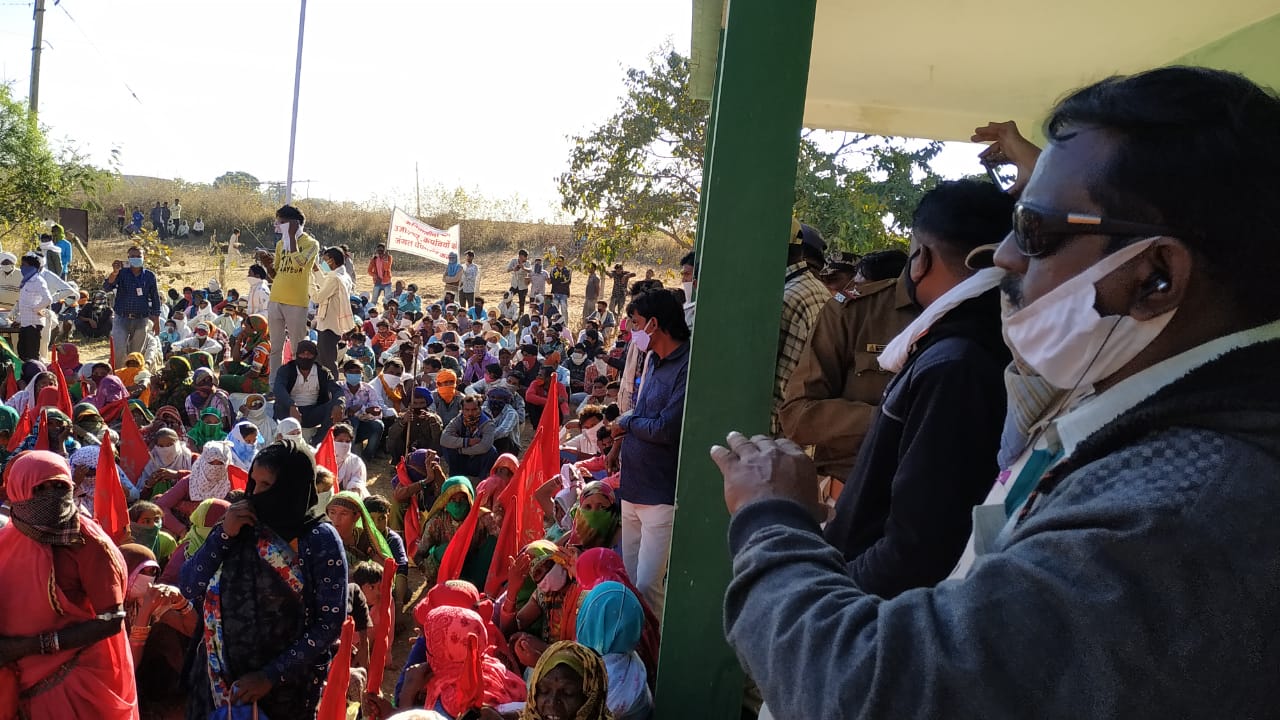
The tribal people deny this. They say they have been applying for pattas, but their claims are constantly rejected. None of the 100-odd adivasi families in Sewal has a patta, said Antaram. These families grow jowar (sorghum) or maize in their ancestral land or work on others fields. Even in February last year, Antaram and others applied online at the government portal, but are yet to get any notification.
The patta is an important document, for it allows people such as Antaram the right to do what their ancestors have been doing, without legal hassles.
Like in Sewal and Lingi Fata, residents of villages Jamnia, Kher Kheda, Borkheda and Tangyapat do not own a patta, and fear eviction despite tilling the land for decades. In all, about 8,000 to 10,000 indigenous people in Burhanpur still await a patta.
So far, more than 6,000 forest land claims have reached the administration of Burhanpur district. “Several are under scrutiny or reconsideration. In the previous year, fifty three pattas were given in the district,” Lakhan Agrawal, assistant commissioner, tribal welfare, Burhanpur district, told Gaon Connection. At this speed, it may take decades before the villagers get their rightful claims under the FRA, 2006, Antaram feels.
Meanwhile, holding fodder in her hand, Shanta Bai asked: “What is our crime? Why are we not allowed to collect kadbi from agricultural land? Why are we targeted by forest officials? Have they ever seen us chop trees or burn the forest?”

